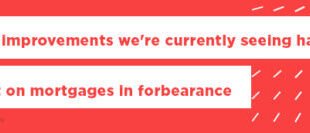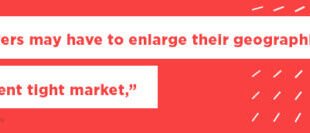
Back in October, we wrote two blog articles about mortgage terms that you should get to know if you’re in the market for a house. Check them out here and here. In one of those posts, we touched on private mortgage insurance, or PMI, but thought it merited a deeper dive. So here it goes:
The old rule of thumb was that borrowers had to come up with a 20% down payment to buy a house. That’s not easy – especially in today’s market. According to the October 2020 REALTORS® Confidence Index Survey, 75% of first-time buyers had less than 20% saved up for a down payment. If you’re struggling to save that much, a loan with a smaller down payment is still doable, but it’ll probably come with private mortgage insurance.
To better understand the pros and cons of PMI, let’s dig in.
Why do I have to take out private mortgage insurance?
Borrowing money to buy a home when you don’t have the full 20% of the property’s asking price to use as a down payment makes you a bigger risk to a lender. Private mortgage insurance helps offset that risk and makes a lender more likely to approve your home loan application.
How much PMI will cost depends on the home’s price and the amount of your down payment, plus other factors we’ll list later in this blog. Your mortgage lender will work with an insurance provider to come up with a figure and go over the cost with you before asking you to agree to the loan. Keep in mind, while PMI will help you get around a lower down payment, monthly mortgage payments will increase slightly (since you’re putting down less money and subsequently borrowing more.) Luckily, PMI won’t be in force for the life of your loan.
5 types of private mortgage insurance
Depending on the type of home you’re looking to buy and the kind of financing you’re applying for, you may encounter different types of PMI. Your PMI is likely to be one of the following:
- Borrower-paid mortgage insurance
Borrower-paid mortgage insurance (BPMI) is charged to the homeowner on top of — and often included in — the monthly mortgage payment. As long as you’re up-to-date on your mortgage payments, BPMI is automatically canceled once you have 22% equity in your home.
- Lender-paid mortgage insurance
To keep insurance payments from adding to your monthly debt, you might investigate lender-paid mortgage insurance (LPMI). But don’t think you’re getting away with something; in exchange for keeping regular payments lower, you’ll get a slightly higher interest rate — so, in essence, you’re still paying. One thing to watch out for with this insurance type is that since it’s built into the loan, it’s not cancelable, even after you reach 22% equity. The only way to get out of it is to refinance.
- Single-premium mortgage insurance
Also known as SPMI, single-premium mortgage insurance lets you pay upfront in full at closing. This keeps mortgage payments lower than if you were to move forward with BPMI. There is a risk, however. Your entire SPMI is non-refundable, which could be an issue if you think you’ll be refinancing or selling your home within a few years. Conversely, you could finance your SPMI into the loan, but then you’re paying interest on it for as long as you carry the mortgage so monthly payments creep up again. Also, not every lender offers SPMI, so don’t assume it’ll be an option.
- Split-premium mortgage insurance
There’s no fancy abbreviation for this one. Split-premium mortgage insurance sort of acts like a mash-up of SPMI and BPMI. Like the single-premium, you’ll pay a lump sum upfront, but it’ll be about half of the total cost. The remainder is treated like borrower-paid mortgage insurance, in that it’s paid over time. This offers you lower monthly bills (though not as low as with SPMI) without having to come up with all that cash at closing. Once mortgage insurance is canceled or terminated, a partial refund may be possible.
- Federal home loan mortgage protection
If you’re buying a home with an FHA loan — which, by the way, is great for buyers who lack the funds for a full downpayment — you may be offered private mortgage insurance directly through the Federal Housing Administration. This type is known as MIP and is required for all FHA loans carrying less than a 10% down payment. Think of it as an upfront payment followed by monthly premiums. But like the lender-paid mortgage insurance, MIP cannot be terminated without refinancing the home altogether.
How much does private mortgage insurance cost?
The last things you want to take on when buying a house are additional fees. But if you can’t come up with the 20% down payment that’s typical for many mortgages, agreeing to pay PMI is a good way to get the lender to see you as less of a risk.
PMI cost is very personal and will vary from borrower to borrower. Expect to pay at least 0.3% of the amount borrowed, annually, and sometimes much more. Let’s say that you’re looking at a house priced at $ 200,000. If your PMI comes in at 1.5%, you’ll end up paying $ 3,000 a year, every year, or about $ 250 a month.
You’ll want to discuss the PMI costs with your loan officer before agreeing to a home loan. To be better informed, take note of what factors go into determining the premiums you’ll be facing. They’ll include:
- Type of residence (primary or secondary home, investment property, etc.)
- Type of loan (conventional, FHA, jumbo loan, refinance, etc.)
- Length of the loan term
- Credit score
- Mortgage interest rate
- Amount of down payment
- Loan-to-value ratio (LTV)
- PMI type offered
- Whether any portion of the PMI is refundable or cancellable
Can I avoid paying PMI?
The best way to get out of paying private mortgage insurance is to save up for a 20% down payment. If that’s not possible, look into a government-insured loan. For example, if you’ve served in the military, you may qualify for a VA loan, which doesn’t require PMI. The same is true for a USDA loan, which helps low- and moderate-income families purchase homes in rural areas of the country.
If you have no choice other than to take out a loan with PMI, ask for one with terms that allow you to cancel as soon as you have 20% equity in the house or an LTV of 80%.
Speak with a local loan officer or apply online
Are you a prospective homebuyer with a question about private mortgage insurance? Reach out to one of our local loan officers to discuss your options. Or, if you’re ready to get started now, you can always apply online!



